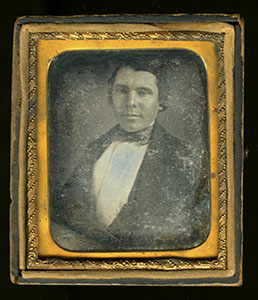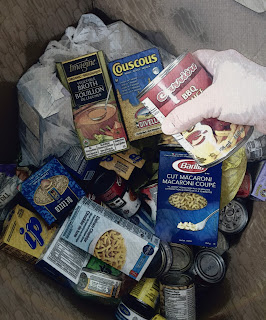Thursday, March 28, 2019
Treadmill Desk Challenge for World Health Day
World Health Day is Friday, April 5, 2019. Join University of Alberta Libraries in our treadmill desk challenge!What is the goal of the treadmill desk challenge? It's to see how many minutes (or hours!) we can accumulate by walking our way to health on our seven treadmill desks. On April 5 we will post a sheet on each treadmill where you can log the amount of time you spent on the treadmill desk. No need to put your name, or any specifics, we just want to know how long you used the treadmill desk . Our goal is to accumulate more than 500 minutes by 6 pm. Help us by devoting some time to our treadmill desk challenge - the best part is that you can study, write or do whatever work you need to get done while being active.
You can find treadmill desks at the following libraries:
- Herbert T. Coutts Education and Kinesiology, Sport and Recreation Library has one desk in the Reserve Room
- Cameron Science and Technology Library has two desks in the southeast corner of the main level
- John W. Scott Health Sciences Library has one desk on the east wall of the top level and two in the southeast corner of level 1a
- Augustana Campus Library has one desks on the main floor by the windows
The announcement of how many minutes were completed will be announced on social media the week of April 8th. Thank you for joining us and supporting World Health Day!
World Health Organization:
https://www.who.int/campaigns/world-health-day/world-health-day-2019
Call to action:
https://www.who.int/campaigns/world-health-day/world-health-day-2019/key-messages
Monday, March 25, 2019
Using Statista to Find Data and Statistics
Have you used Statista to find visualizations of data and statistics to include in your papers or presentations? The University of Alberta Libraries recently added the premium version of Statista, a portal for marketing and consumer data and statistics, to its list of databases. This means you now have access to the complete data set both on and off-campus.- Do you want to know about projected job growth by Canadian industry as you consider what discipline to study?
- Or maybe you need to know which social media platforms are used worldwide for your communications paper?
- Do you need statistics about backpack sales in a visual format for a business class presentation?
Using Statista, you can find data visualizations and reports about:
- Societal statistics including employment, poverty, health, and population
- Company, industry, brand, and consumption data
- Media and marketing statistics
- Sales, forecasts, revenue, and users
- Information from 21 countries, including Canada
Friday, March 22, 2019
How Have Our Photos Changed Since the 19th Century?
Hanne Pearce
Friday, March 22, 2019
BPSC
,
graduate students
,
peel
,
special collections
,
staff
,
students
,
workshops
No comments
:
I immediately signed up for “19th century photographic prints” as I am a freelance photographer outside my work at the library. I’ve always been intrigued by old photographs as they reveal unspoken aspects about life in a different time.
We live in an era where the digital photograph has made photographs mundane everyday tools. We snap selfies of ourselves in the mornings when we’re having a particularly good hair day, we shoot funny things we witness on our way to school or work and the every-day electronic exchange of photos can make us take them very much for granted. How often do we look at our photos and how many of them become forgotten on our devices? In a world full of photos, it is difficult to conceptualize a time when photographs did not exist.
One of my favourite reads of the past year was Capturing the light : the birth of photography, a true story of genius and rivalry by Roger Watson and Helen Rappaport. The book details the haphazard history of how photography was invented and the many players (Niépce, Daguerre and Henry Fox Talbot to name a few) that played a role in its development. With these ideas on my mind lately, I was quite excited when I saw the workshop on 19th century photographs workshop as an opportunity to learn from experts about how photography was practiced in the past, and to actually see examples of the different types of prints in person.
Bruce Peel Special Collections Conservator Carolyn Morgan lead the session which showcased many different types of early photographs. Starting with early Daguerreotypes, Ambrotypes, to Tintypes, Carolyn explained the processes by which these different types of prints were created.
One of my favourite reads of the past year was Capturing the light : the birth of photography, a true story of genius and rivalry by Roger Watson and Helen Rappaport. The book details the haphazard history of how photography was invented and the many players (Niépce, Daguerre and Henry Fox Talbot to name a few) that played a role in its development. With these ideas on my mind lately, I was quite excited when I saw the workshop on 19th century photographs workshop as an opportunity to learn from experts about how photography was practiced in the past, and to actually see examples of the different types of prints in person.
Bruce Peel Special Collections Conservator Carolyn Morgan lead the session which showcased many different types of early photographs. Starting with early Daguerreotypes, Ambrotypes, to Tintypes, Carolyn explained the processes by which these different types of prints were created.
Laid out on the tables in the Peel Library these photos, most of which were portraits, all exhibited different features depending on the processes that were used to create them. Some were dark and very detailed, others were faint or looked almost like drawings rather than photographs.
One of the key things I learned is that Daguerreotypes were printed on a sheet of silver plated copper, and they can easily be identified by their mirror-like surface. Daguerreotypes as were often encased in a frame to prevent tarnish.
 |
| Daguerreotype example |
One of the key things I learned is that Daguerreotypes were printed on a sheet of silver plated copper, and they can easily be identified by their mirror-like surface. Daguerreotypes as were often encased in a frame to prevent tarnish.
 |
| Tintype example |
Later Tintype photos were imprinted onto iron plates (metal) and Ambrotype were on glass with a dark paper or material backing.
 |
| Ambrotype example |
The workshop reinforced how early photography was expensive and only really the wealthy could really afford to have photos taken. It also revealed to me how one of my favourite past times was once heavily linked with chemistry and chemical processes.
I often wonder what the earliest photographers would think about how we now snap pictures of our food to disseminate with everyone we know, or text shots of store shelves as information to a friend or partner who is not present. Even though our digital equivalents manifest instantly and can be sent across the world in seconds, our photos still reveal details of our lives and are very much a part of the history photography. I only hope someday hundreds of years from now, people will be able to view them with the same fascination as we view early photographs.
Look for upcoming Bruce Peel workshops you can go to the library workshop page and filter the sessions for just Bruce Peel Special Collections.
You can also read more about 19th Century Photography in books from our collection.
I often wonder what the earliest photographers would think about how we now snap pictures of our food to disseminate with everyone we know, or text shots of store shelves as information to a friend or partner who is not present. Even though our digital equivalents manifest instantly and can be sent across the world in seconds, our photos still reveal details of our lives and are very much a part of the history photography. I only hope someday hundreds of years from now, people will be able to view them with the same fascination as we view early photographs.
Look for upcoming Bruce Peel workshops you can go to the library workshop page and filter the sessions for just Bruce Peel Special Collections.
You can also read more about 19th Century Photography in books from our collection.
Thursday, March 21, 2019
Robots have invaded the library - Borrow one today!
Are you a student teacher looking for a cool activity to get your student’s attention? Or, are you interested in plugging into the wonderful world of robotics? H.T. Coutts Library and Bibliothèque Saint-Jean both have a variety of robot kits available to borrow.
From cute little bots that can be controlled by mobile devices to more complex robot building sets (including a few LEGO Mindstorm kits), there are kits geared towards every age and technical experience level. They are an exciting way to develop technological literacy and problem-solving skills in students - especially important in our increasingly automated world. Plus, who doesn’t want to play with robots?
Take a look at our lendable robot fleet on the Robotics page of the Teaching Science guide. Or, visit H.T. Coutts Library or Bibliothèque Saint-Jean to explore these options. Robot kits can be borrowed for a one week loan period.
Wednesday, March 13, 2019
Vote in the People's Choice Award for 2019 Images of Research
Anonymous
Wednesday, March 13, 2019
events
,
graduate research
,
graduate students
,
Images of Research
No comments
:
At its essence, the University of Alberta Images of Research competition challenges our graduate students to share their research in a way that society can relate to and understand.
The judges have met, debated, and chosen the winners, apart from the People's Choice Award, who will be revealed at a reception on April 3. The coveted title of 'People's Choice' and the $250 prize is chosen by you from the 24 semifinalists.
The People's Choice Award voting is now open. All of this year's semifinalists will be displayed at Coutts Education and Kinesiology, Sport, and Recreation Library on North Campus, University of Alberta throughout April.
How to vote:
1. Click here to view the finalists online and vote for your favourite entry with the best image and description.2. Share this post with your community!
Voting is open to the public from March 13 to 20, 2019.
Monday, March 4, 2019
Food for Fines is back for 2019! Donate Food to Pay a Fine
 In partnership with the Campus Food Bank, University of Alberta Libraries will be running a Food for Fines Campaign and Food Bank Drive at all library locations from March 6th until April 30th, 2019. All donated food items will be distributed to members of the University of Alberta community, and monetary donations will be used by the Campus Food Bank to purchase more food for distribution to the community.
In partnership with the Campus Food Bank, University of Alberta Libraries will be running a Food for Fines Campaign and Food Bank Drive at all library locations from March 6th until April 30th, 2019. All donated food items will be distributed to members of the University of Alberta community, and monetary donations will be used by the Campus Food Bank to purchase more food for distribution to the community.How does it work?
Visit a service desk in any UAlberta Library location.
Donate non-perishable food item[s].
 While all food and toiletry donations are appreciated, the most needed items are:
While all food and toiletry donations are appreciated, the most needed items are:- canned meats (eg. tuna)
- canned fruits & vegetables
- beans (without sauce)
- peanut butter
- cereal
- brown rice
- whole wheat pasta, pasta sauce
- rolled oats (instant oats)
Only current fines on UAlberta items and books from participating NEOS Libraries will be waived (books from MacEwan and Olds College not eligible). Charges for lost or damaged books are not eligible.
No fines? Donate a food item anyway!
New this year: you may also choose to make a monetary donation to the Campus Food Bank as part of the Library Food For Fines Campaign. How does it work?
- Make your monetary donation online : campusfoodbank.com/ using the Library Food for Fines Donation Form.
- IMPORTANT: For your library fines to be waived, you must include the 13-digit barcode from your ONECard / library card. By submitting the donation form, you give the Campus Food Bank permission to share your name, barcode, email address, and donation amount with the UA Libraries.
- For every dollar donated to the Campus Food Bank, you will be waived the same amount in overdue library fines, to a maximum of $100. Only current fines on UofA items and books from participating NEOS Libraries will be waived. Fines on MacEwan and Olds College books are not eligible. Charges for lost or damaged items are not eligible.
- Fines will be waived in 7-10 business days after you make your donation.
Please ask for details at a library service desk.
Follow @uofalibraries or @campusfoodbank with #foodforfines for campaign updates.
Subscribe to:
Posts
(
Atom
)










